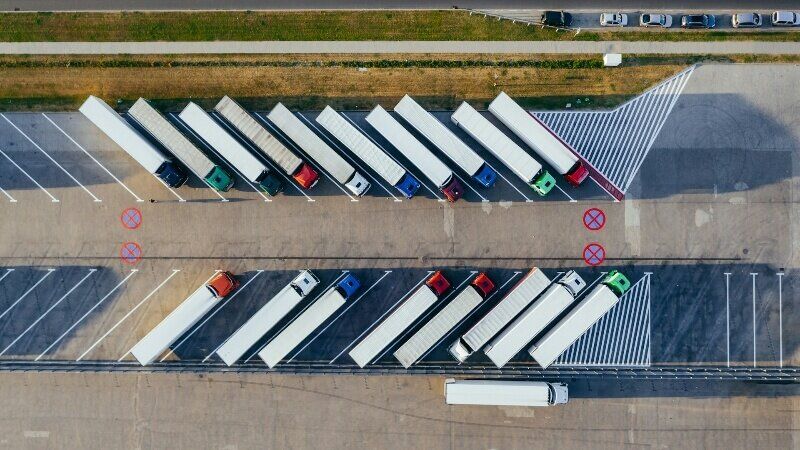Seven Fleet Inefficiencies That Can Cost Your Company a Significant Amount of Money

If you’re managing a fleet of prime movers in Asia, you already know that margins are tight. However, many operations don’t realize how much money they’re bleeding due to common organizational inefficiencies. These aren’t just small leaks — they’re silent profit-killers that add up fast.
These seven key areas where inefficiencies drain your bottom line include missed maintenance checks and inefficient routing. What else are you missing in making your fleet more productive?
1. Poor Route Planning
Failing to plan delivery routes leads to wasted resources and delays. Inefficient routing is one of the fastest ways to burn through your budget. Prime movers stuck in traffic or doubling back due to poor scheduling consume more fuel and cause delivery delays, which hits profitability hard.
Modern fleet software uses global positioning satellites (GPS) and real-time data to optimize routes on the fly for the best, safest and fastest routes, regardless of location. Planning tools help businesses dynamically manage internal administration and reduce unnecessary mileage, boosting cost efficiency and delivery reliability.
2. Fuel Waste From Driving Habits
Habits like aggressive acceleration, hard braking and excessive idling are part of a string of bad driving decisions that add up to consuming more fuel per mile. These actions are also surprisingly common and costly.
Telematics systems monitor driver behavior and provide real-time coaching opportunities. Improving driver habits can save fuel and emissions and extend the life of your prime mover fleet.
3. Neglected Tire Maintenance
Worn or incorrectly inflated tires can reduce fuel efficiency by as much as 3%, which adds up quickly to massive expenses.
Tire pressure monitoring systems and routine inspections help maintain optimal conditions, improving mileage and safety while lowering costs. Be sure to regularly check tires before your prime movers hit the road.
4. Lack of Preventive Maintenance
Skipping scheduled maintenance leads to costly, unscheduled downtime. Every minute a prime mover is off the road, it’s not generating revenue. Worse, emergency repairs are typically more expensive than preventive services.
Regular maintenance can reduce breakdowns, lowering the risk of costly and lengthy troubleshooting repairs because old parts exceed service times. Predictable and scheduled upkeep creates fewer delays or scheduling disruptions and has lower cost implications.
5. Ineffective Vehicle Tracking
Without real-time tracking, fleet managers are flying blind. You risk missed deliveries, unauthorized vehicle use and wasted fuel. GPS integration with tracking systems and telematics’ real-time data ensures better route adherence, quicker response times and fewer hours idling.
When the fleet manager knows where each of their prime movers are, they can integrate plans, adjust to route hazards and cascade vital information to affected drivers, saving valuable hours on the road.
6. Compliance Penalties
Missed inspections, outdated driver records, or a lack of proper certifications can trigger steep fines or legal troubles. An impounded mover doesn’t earn money, but it costs money to get the vehicle and driver released over preventable administrative challenges. These slip-ups often happen because of outdated tracking systems and manual processes.
Digital compliance tools help your fleet meet all local transport regulations. Automated alerts and centralized documentation reduce the risk of penalties while keeping your operations audit-ready.
7. Inventory Damage in Transit
No company wants to disappoint a client by delivering damaged goods. Cargo that’s improperly secured or handled during transit can be compromised. This results in refunds and reshipment and also affects the company’s reputation.
Simple tools like shock-absorbing mats and driver training can minimize the risk. These can be paired with route optimization according to the cargo load so drivers avoid rough roads when carrying fragile shipments. This leads to fewer complaints and fosters better client retention. Using radio-frequency identification (RFID) tags helps with loading trailers efficiently and ensures prime movers are packed according to their delivery routes to minimize cargo movement.
Fleet Efficiency for Maximum Profitability
The cost of not addressing inefficiencies is higher than you may think. Hidden cost-eaters like routing, maintenance and fuel use chip away at your profit margins with each trip. Investing in modern management solutions and driver training protects your business from financial leaks and future-proofs your operations.
Logistics companies worldwide face similar challenges, but a resilient approach that monitors driver behavior, tracks maintenance and plans for inspections will keep you at the top of your industry. When considering the costs to your bottom line, remember that there’s much more to your calculations than fuel and parts — it’s also about people and how to ensure your team, from drivers to fleet managers to service providers, contributes to your success.
Author Bio: Oscar Collins is an auto writer with over five years of experience in the industry. He has bylines at Carwash, Global Trade Mag and InAutomotive. Follow him on X @TModded for frequent updates on his work.
